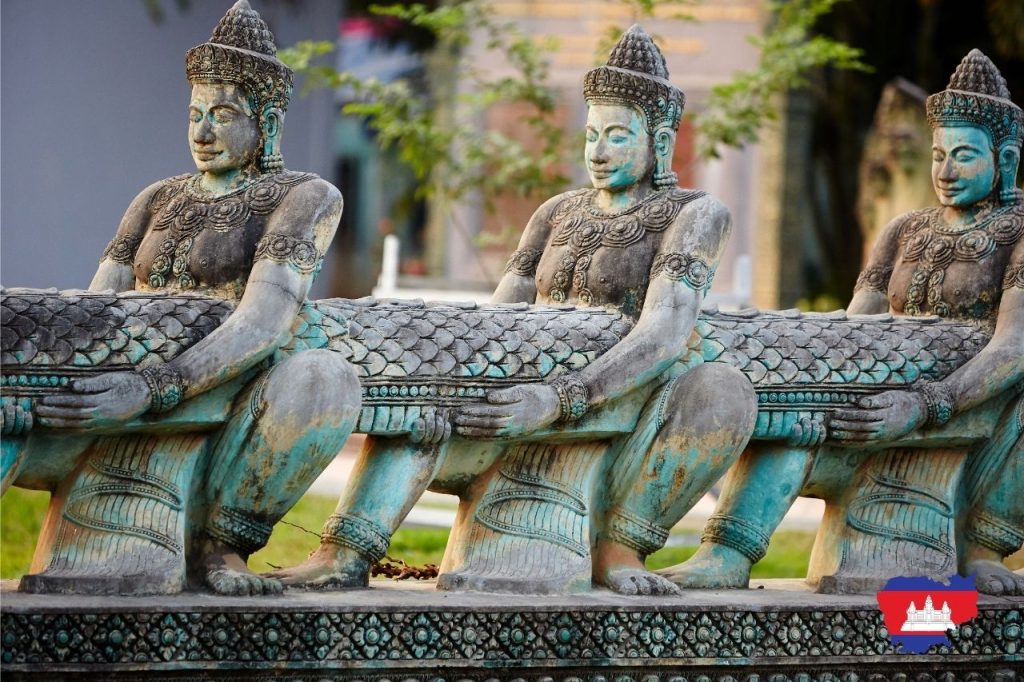Blog, Cambodia, Countries, Travel Guide
What is the best time to visit Cambodia?
The best time to visit Cambodia for most travelers is during the dry season from November to February. This is when temperatures are mild and dry and it’s easier to get around temples without sweltering under the sun. However, it’s still hot enough to swelter on the beaches and humidity can be high so make sure to pack plenty of water and sunscreen.
The transition period from September to October can also be a good time to go. The rains have begun to taper off and while you may experience a few showers they won’t affect your enjoyment too much. It’s a great time for rural adventures like cycling and kayaking and to see the country at its greenest. It’s the perfect time to see Angkor and the other temples in relative solitude.

The hottest and most humid season is from March to June. While the extreme heat is not as bad as it sounds it can be quite tiring to explore the temples and the streets and you will need to use a lot of sunscreen.
Visiting Cambodia in January
With the country basking in bright sunshine and very little rainfall, Cambodia is the perfect destination for those looking to escape the cold winter weather back home. With the price of accommodation and airfares being lower than in April, May and September (the peak season), January is a great time to get out and explore this beautiful kingdom.
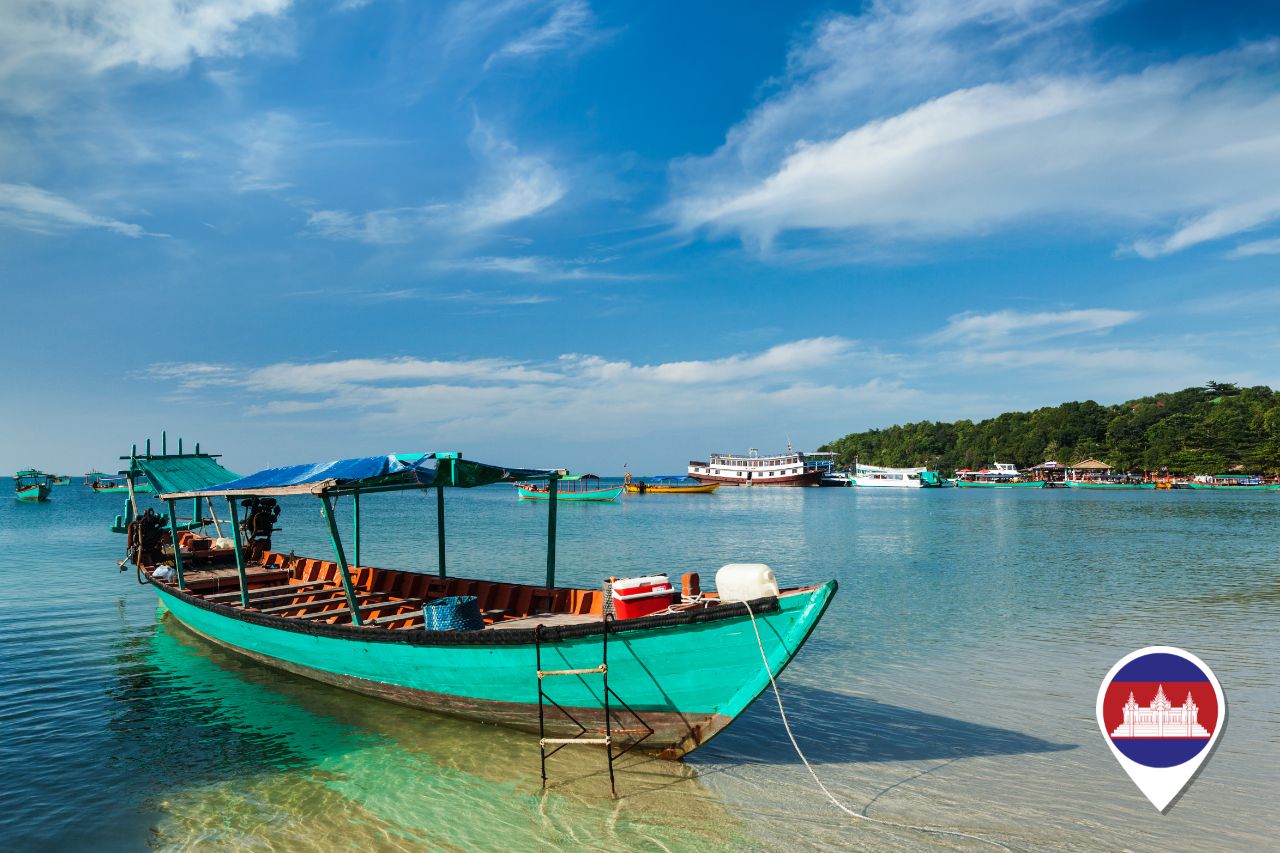
The temperatures in Cambodia in January are very similar to the rest of the year, ranging from a hot 31 degrees Celsius in Phnom Penh, to around the same in Siem Reap. For those planning on going on a tour of the country, it is advisable to take plenty of water with you as it will be very warm.
Visiting Cambodia in February
Cambodia is a country brimming with natural beauty, storied history and swathes of culture. It’s no wonder the country is a popular destination with travelers from around the world. February offers an ideal time to explore this country.
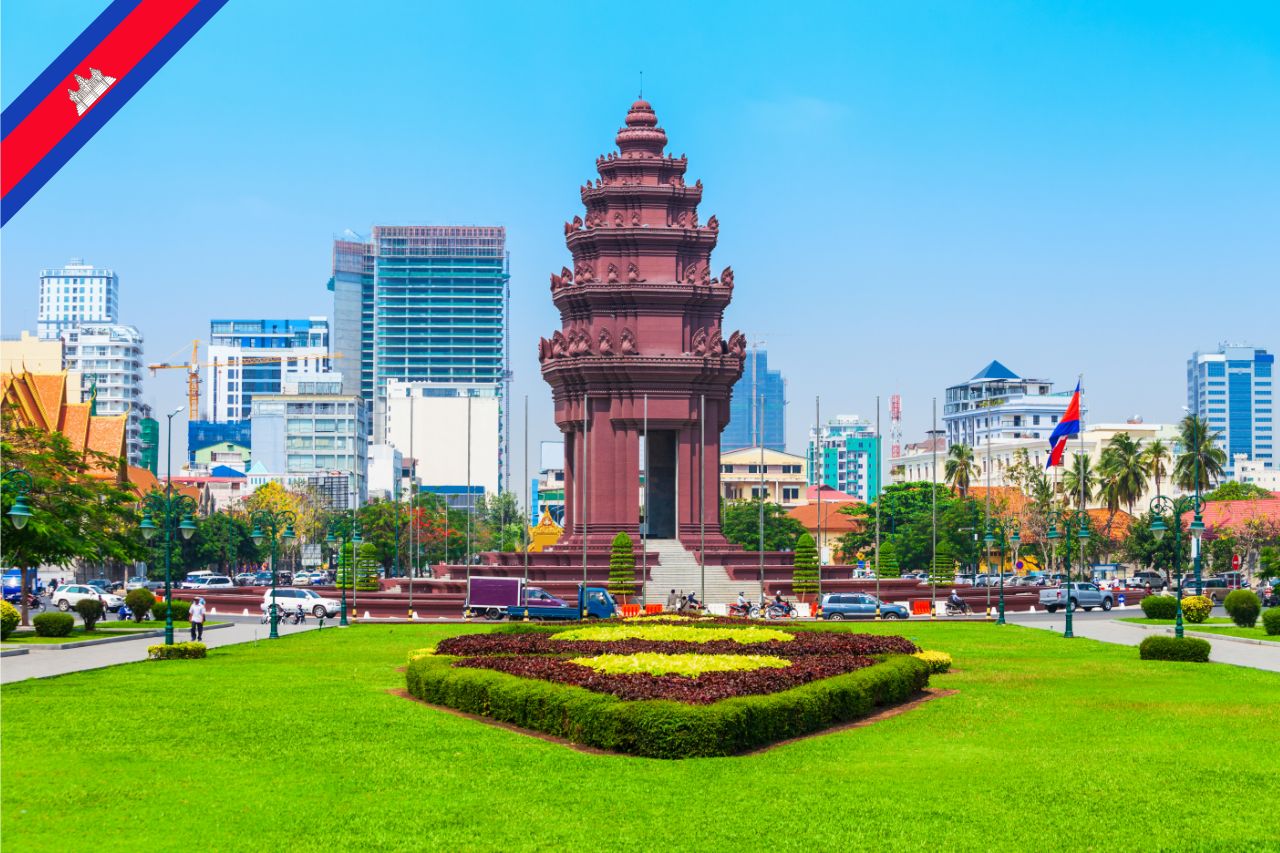
The weather is sunny with minimal rainfall throughout the month across the country. This makes it a perfect time for sightseeing, especially in the capital of Phnom Penh and its southern regions. It is also a great month to visit the beaches on Koh Rong, Sihanoukville and Kep. Along with the tropical islands in Cardamom and Tatai, these locations offer sunshine, blue skies, and breezing temperatures making for the ideal beach holiday.
Throughout the country, the climate remains warm and dry with the exception of the mountainous regions of Ratanakiri and Mondulkiri. The best time to visit the country’s magnificent temples, including Angkor Wat, is during this period.
Visiting Cambodia in March
As the start of Cambodia’s dry season, visiting in March offers a great mix of sun and warmth throughout the country. Siem Reap is a little hotter than other parts of the country but this is the ideal time for exploring ancient temples and exploring the flooded forests and stilted villages at Tonle Sap Lake. However, the high UV levels mean that you’ll want to apply plenty of sun cream and seek shade in the hottest part of the day.
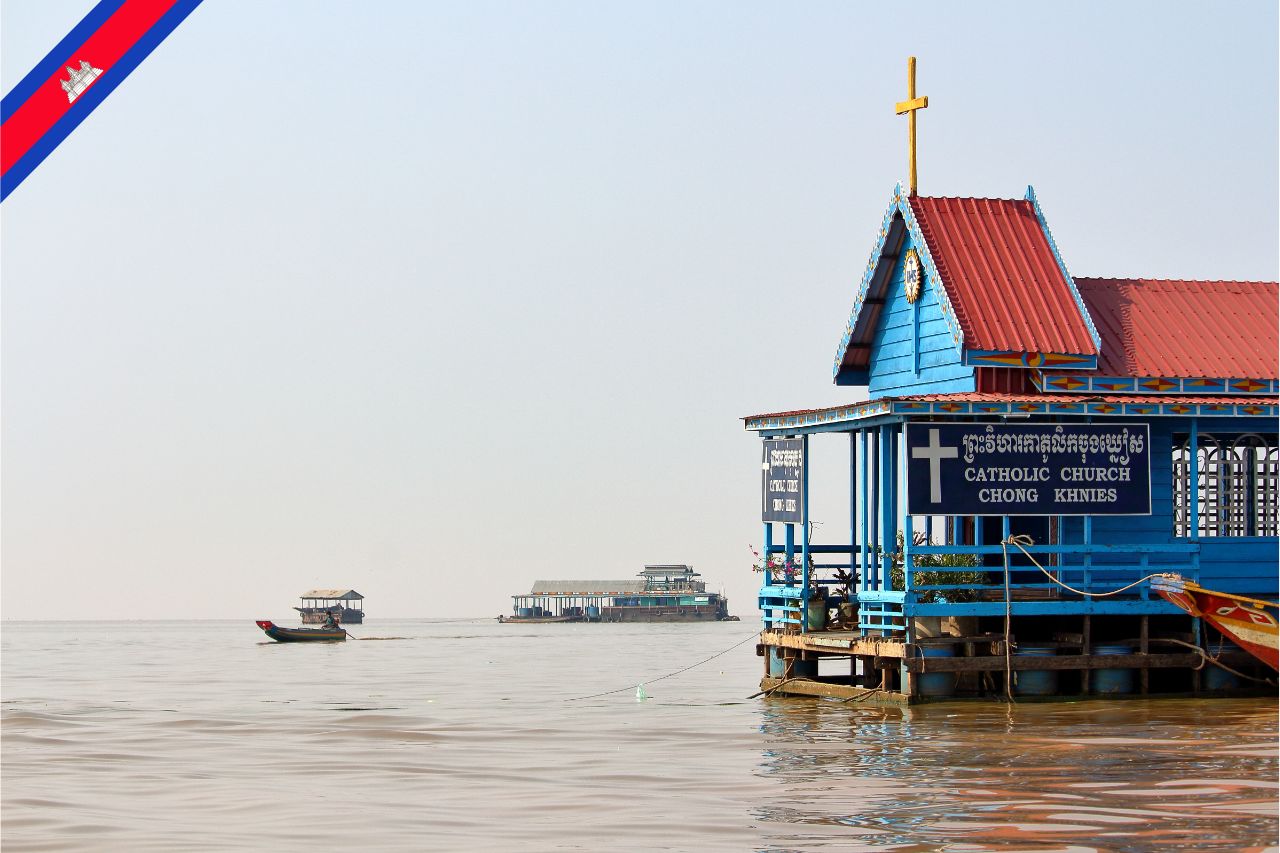
The rest of the country is a little cooler and this makes it a great time to explore the beaches around Sihanoukville or even the inland region of Ratanakiri or Mondulkiri. During this time, you can also enjoy festivals such as the River Festival in mid-March where you can watch boxing matches, boat races and musical concerts alongside the locals. In addition, the Royal Ploughing Ceremony takes place during this month where sacred oxen are presented with plates of food and then used to predict the rice-growing year ahead.
Other highlights of a trip to Cambodia in March include the International Women’s Day celebrations and an opportunity to experience Ancestors Day, a Groundhog Day-esque ceremony that is held to predict the coming year. It can rain at times during this month but these downpours usually last no more than a few hours and don’t stop you from enjoying the sights of Phnom Penh or wandering the evocative temples of Angkor Wat.
Visiting Cambodia in April
The climate and temperature in Cambodia in April are both hot and steamy, with the hottest city being Phnom Penh at an average of 27 degrees Celsius and Siem Reap only a few degrees warmer at 30 degrees Celsius. But don’t let this put you off because this is a fantastic time to visit the Kingdom of Wonder, especially as it is much less crowded at its most iconic sites such as Angkor Wat and Phnom Penh.
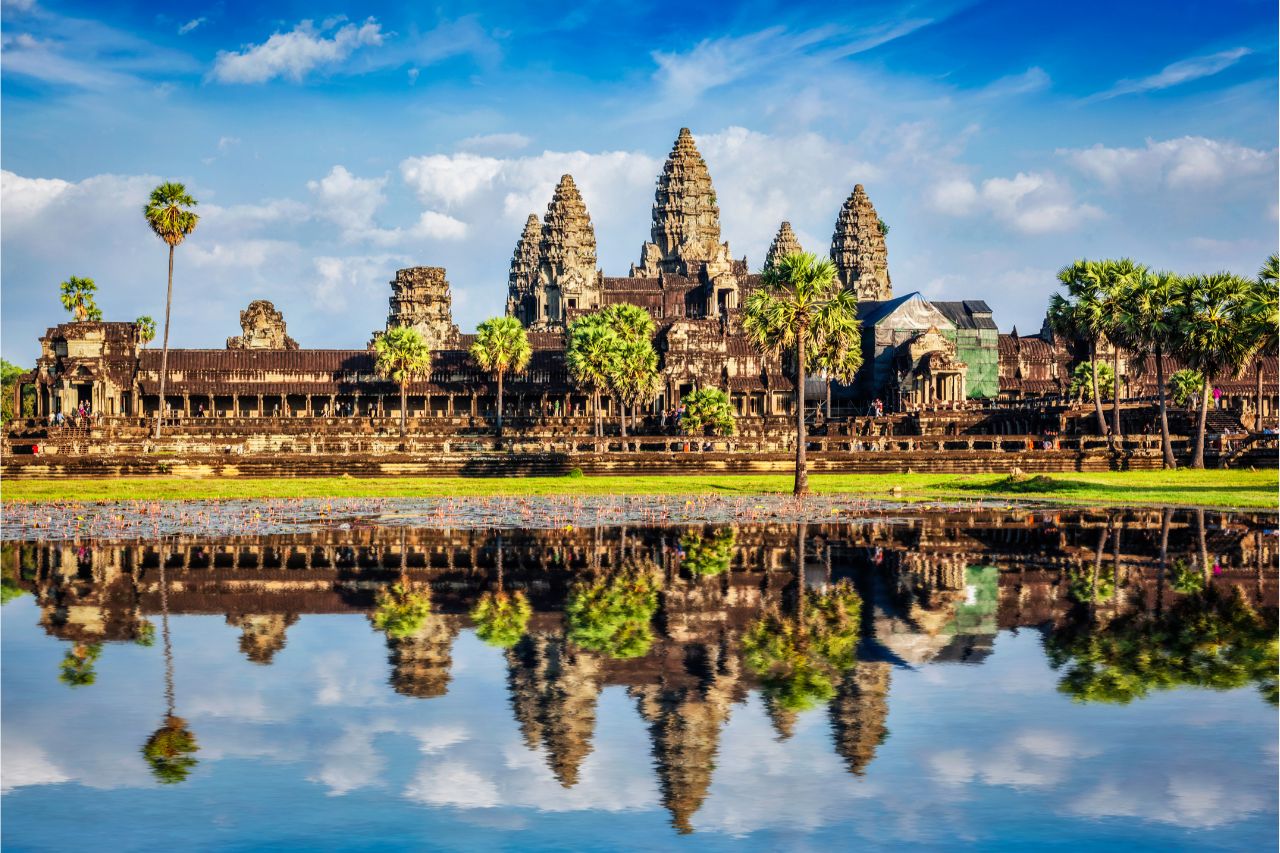
However, it is important to note that April is the start of Cambodia’s rainy season, so there will be an increase in rainfall and visitors should expect some showers. The rainy season runs through to October, but it doesn’t affect all parts of the country equally so be sure to bring your waterproofs with you when visiting during this time.
Temperatures can still be high during the day, and the sweltering heat is a real drawback for some travellers, with some locals choosing to avoid the cities at this time. There is also a dearth of shade and the dust caused by slash-and-burn farming can make sightseeing difficult in rural areas.
Despite the heat, many visitors choose to head to the beaches at this time of year, and this is one of the best times to see Cambodia’s beautiful coastline. Many of the most popular beaches, such as Ochheuteal Beach and Serendipity Beach are tranquil and uncrowded at this time. However, it is important to bring a good amount of sunscreen and some insect repellent, as mosquitoes can be active at this time of the month.
Visiting Cambodia in May
Visiting Cambodia in May is a great option for travelers looking to escape the crowds and enjoy some of the country’s most stunning attractions. With lower rates and fewer tourists, it’s easy to explore the city of Siem Reap, sample delicious Khmer cuisine at a local restaurant, or take in a spectacular sunrise small-group tour of Angkor Wat.
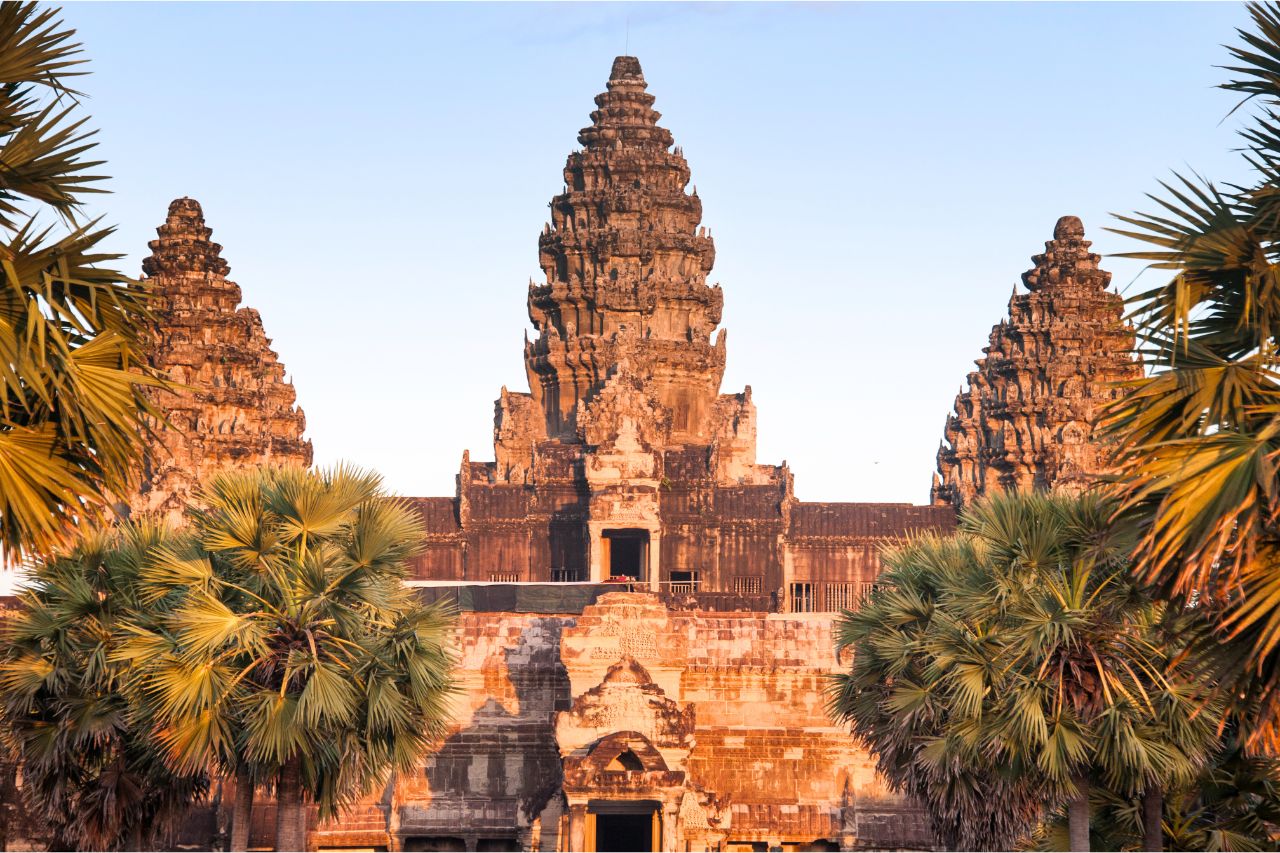
The weather in May is generally warm and sunny with temperatures nestled around the mid to high 30s, although humidity will be higher than usual. It’s also the transitional month between the dry spring and the wet summer, with sporadic rainfall likely to begin by the end of the month.
While the rainy season is beginning, it won’t be heavy or prolonged and will provide the perfect opportunity to cool off with a dip in one of Cambodia’s beautiful beaches. Or, you can go diving and snorkeling in Sihanoukville where the waters are warm enough to enjoy a range of marine life including nudibranchs, triggerfish, and whale sharks.
Visiting Cambodia in June
Visiting Cambodia in June is the perfect choice for those looking to get an overview of this gorgeous country with few crowds around. You can also enjoy the rainy season and experience some of the unique floating villages along the Mekong and Tonle Sap Rivers.
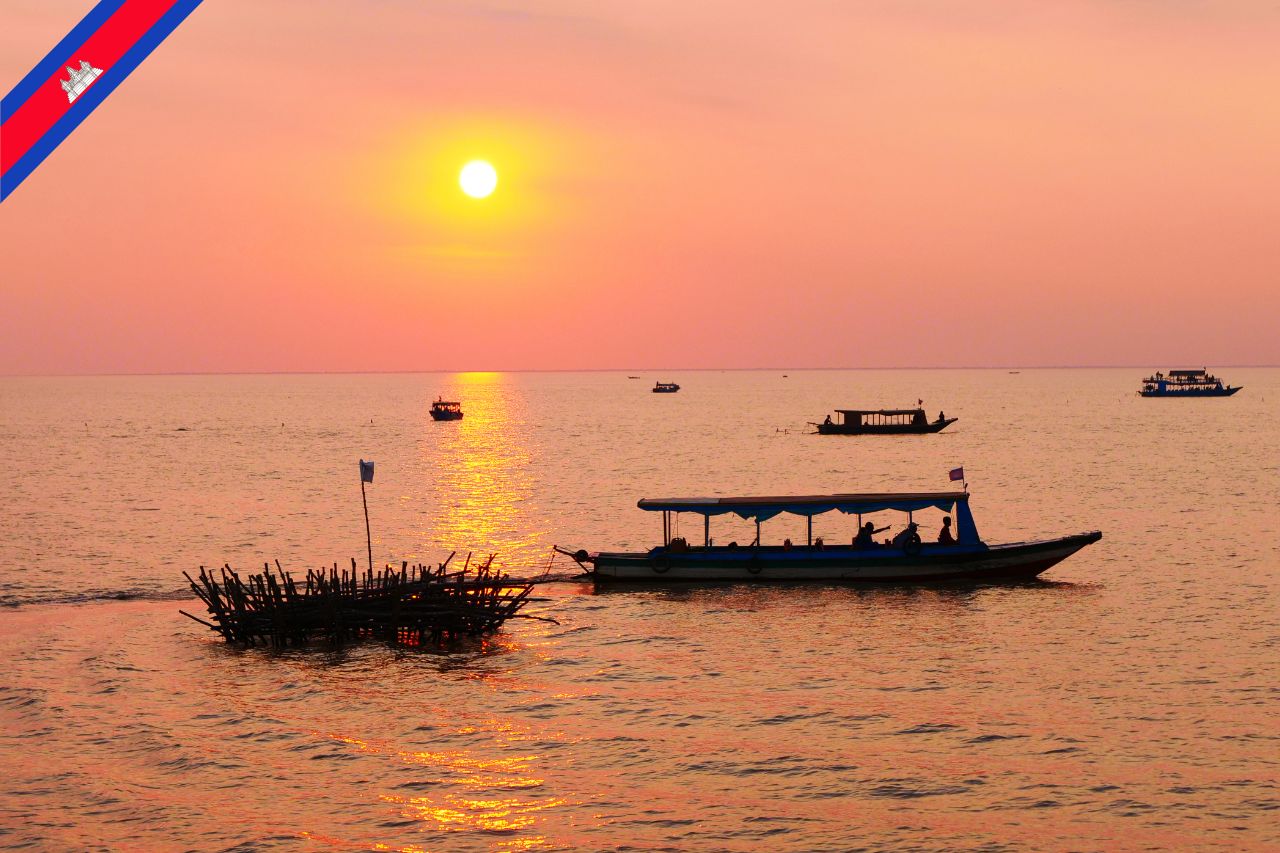
As it’s the rainy season, you will need to pack an umbrella and waterproof clothes, but that shouldn’t deter you from exploring Cambodia! It’s a great time to take a boat cruise or explore one of the many museums and temples in the capital city of Phnom Penh.
You can also visit the Angkor Wat complex and admire its ancient beauty when it’s not too hot or rainy. Getting there early is the best way to avoid crowds and get the most out of your time at this spectacular landmark.
June marks the beginning of the monsoon season, so it’s a good idea to bring a light raincoat or rain poncho with you when you travel. The rains will typically only last a short amount of time, so you won’t have to worry too much about being rained on.
The flora of the tropical landscape is at its most vibrant and lush at this time, with the moss covered ancient temples and rice paddies bursting in colors so bright you won’t be able to look away. This is also a great time to experience Ancestors Day or one of the many festivals that take place in the capital city.
Visiting Cambodia in July
As we move into the middle of the rainy season, the days are generally sunny but also cool (avg air temps: 26-27degC). Rainfall is frequent but typically brief with only a few downpours each day. This time of year is best for enjoying the country’s landscapes, from moss covered temples to lush rice paddies.
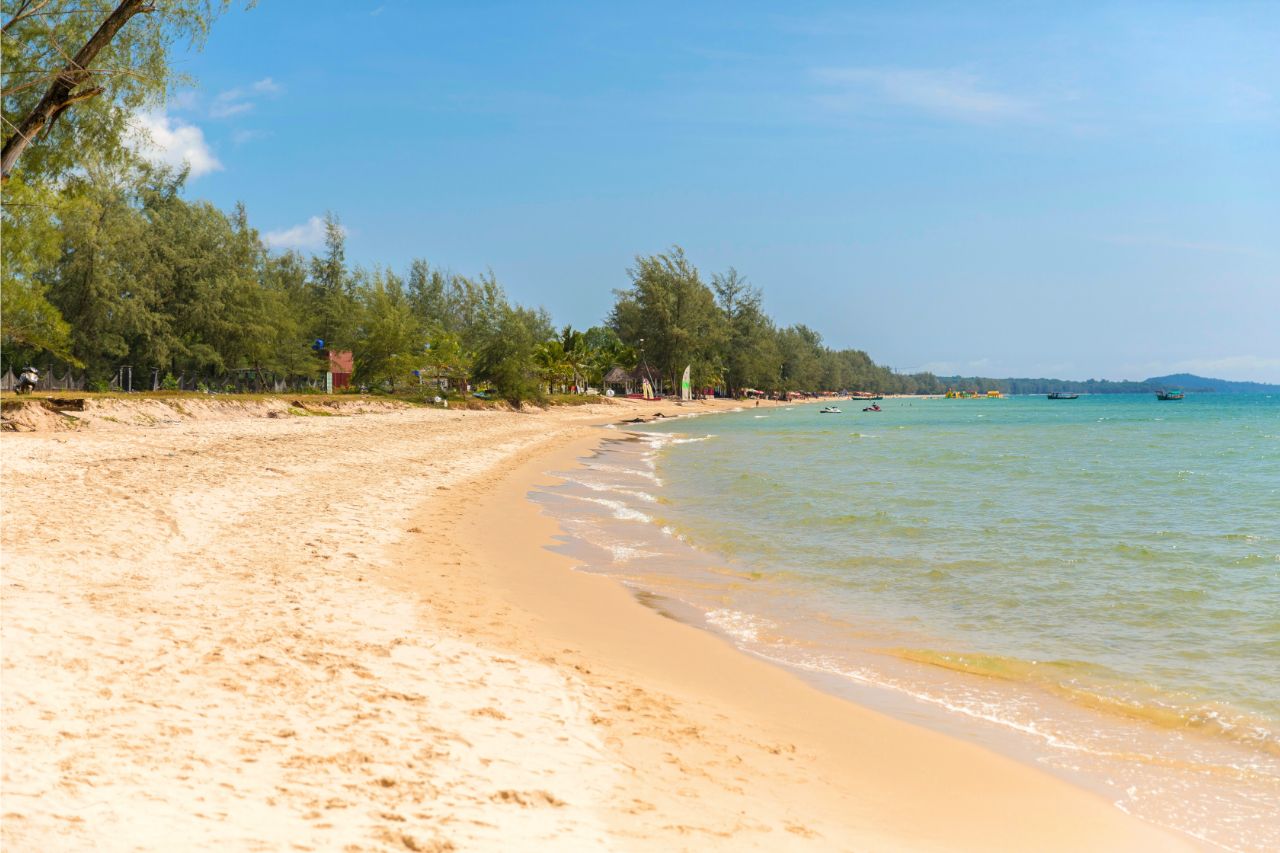
It is a great time to visit Cambodia’s coastal areas such as Sihanoukville and Koh Rong. Here you will find lower accommodation prices, a little less rainfall and the beaches are at their most beautiful. This region is a top choice for beach hopping as it serves as the jumping off point to secluded islands such as Koh Rong and Koh Samloem.
The hottest part of the year has passed so it is a good time to visit all of Cambodia’s famous temple complexes including Angkor Wat. The crowds are smaller which means you’ll get to see the temples in relative solitude compared to other times of the year.
Visiting Cambodia in August
Visiting Cambodia in August is the best time to enjoy the country’s natural beauty and vibrant green landscape. While some highlights such as Angkor Wat can be a bit wet, most attractions are still open and largely unaffected by rain. Rainy season is also known as the “green season” because the countryside blooms with lush greenery. It is a great time for nature lovers to explore the stunning untouched forests and mountain ranges.
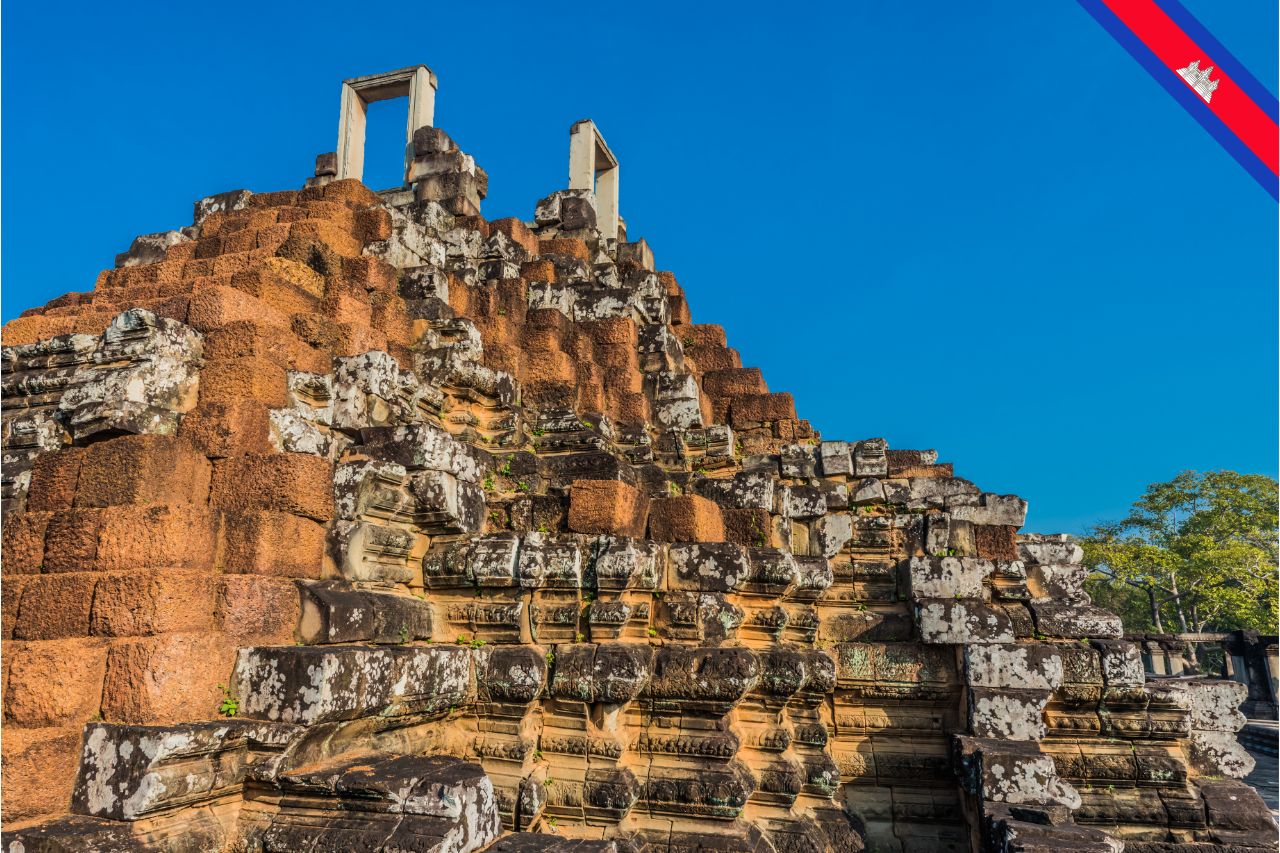
The wet weather can also be very refreshing, especially after the intense heat and humidity of summer. It can be very pleasant to stroll along the shady pathways of the city or relax on a scenic river cruise.
It is also a good time for cultural and history enthusiasts to visit the ancient temples of Angkor, without the hordes of tourists. It is possible to find accommodation at reasonable prices, and there are also many bargains on tours and activities.
In the capital, Phnom Penh, visitors can escape the hot and humid weather by touring the city’s historical temples and museums. The capital offers an interesting contrast of the chaotic street life and peaceful monuments.
Visiting Cambodia in September
Visiting Cambodia in September is a great choice for those who prefer to experience the rich culture of the country with fewer crowds around. With a range of festivals and events, you can gain a deeper understanding of the country’s history and traditions. For example, you can witness the celebration of Pchum Ben where the people pay homage to their ancestors. Moreover, you can enjoy the majestic temples of Angkor and see how a unique water system sustains a community at Tonle Sap Lake.

A tropical country, September can bring rainy days but these are usually short-lived. However, it is better to pack a raincoat and umbrella as you may encounter some showers during your trip. Despite the monsoon season, the countryside remains lush and vibrant with emerald green rice paddies and rejuvenated forests.
Another highlight of visiting Cambodia in September is that it is considered the shoulder season so it’s not as crowded as other tourist seasons. This gives you the opportunity to explore famous attractions like Angkor Wat and the Royal Palace without the massive crowds.
It is a perfect time to go on an adventure and explore the country’s beautiful natural wonders, including the unspoilt beaches of Sihanoukville and Koh Rong. Moreover, you can also indulge in exhilarating water sports activities at these places with perfect water levels.
Visiting Cambodia in October
Visiting Cambodia in October is a great way to experience the country without all the crowds of high season. Angkor Wat is the highlight of any visit to Cambodia and in October you’ll get the chance to explore the incredible ruins with local tour guides who can tell you all about the history of the temples and take you to awesome places for pictures.
You’ll also find the weather is pleasant with the rainy season coming to an end and you’ll be able to explore the luscious landscapes of Ratanakiri and Mondulkiri in the north while enjoying warm temperatures and refreshing waters at the waterfalls. It’s the perfect time to try a new experience such as taking part in a cooking class where you can learn how to create classic dishes with local chefs.

The UNESCO World Heritage Site of Kratie is at its greenest in October and you’ll be able to see the river dolphins swimming around. It’s also a fantastic time to see the diverse flora of this tropical province while you can also visit one of the country’s largest nature reserves to spot monkeys and other different reptile species.
Visiting Cambodia in November
Visiting Cambodia in November is ideal for exploring the country’s archaeological sites, including Angkor Archaeological Park, Kep, and Poipet, as well as its many magnificent beaches. It is also the best time for travelers to take advantage of Cambodia’s spectacular natural beauty, such as the Cardamom Mountains and the coastal city of Sihanoukville.

The weather is warm and dry throughout most of the country in November, making it easy to enjoy outdoor activities without having to worry about rainy weather. It is also the best season for exploring Cambodia’s beautiful coastline, including Koh Rong. Travelers can enjoy a relaxing beach day, and even watch glistening planktons on the ocean floor at night!
No trip to Cambodia is complete without a visit to the incredible Angkor temples. November is a great month to tour the ruins because it is a bit before peak season and the weather is warm but not hot. Visitors can spend the entire day touring the ruins and taking in the amazing sunsets and sunrises without having to fight the crowds.
Visiting Cambodia in December
December is one of the best times to visit Cambodia as it offers a balance between warm (but not too hot) temperatures, sunny skies and little-to-no rain. This makes it the perfect time to explore the temples of Angkor, take a dip in the warm waters at Sihanoukville and to experience the rural charm of Battambang. The weather is also great for hiking in the mountains and jungle areas of Ratanakiri and Mondulkiri.

It’s also an ideal time to enjoy a cruise along Tonle Sap Lake, see the world’s largest freshwater lake at Angkor Wat and learn about local village life on a Cambodian homestay. If you’re an animal lover, the lush forests around Virachey National Park are perfect for spotting buff-cheeked gibbons and other exotic wildlife.
If you’re interested in diving and exploring the coral reefs of the South Coast, this is also a great time to travel to Kep, where the beaches are at their most beautiful. Or, head to Rabbit Island for a day trip spotting crocodiles, dolphins and other sea life while snorkeling in the crystal clear waters.
The weather is also great for savouring Cambodia’s delicious cuisine, such as the world-famous amok, a creamy fish curry steamed in banana leaves, or tuck into scrumptious beef Lok Lak and other street food delights. When packing for a trip to Cambodia in December, opt for light and breathable clothing made from cotton or linen, and don’t forget sunglasses, a wide-brimmed hat and an endless supply of sunscreen.
Best time to visit Phnom Penh Capital
The best time to visit Phnom Penh Capital is between November and April when the weather is drier. This is also Cambodia’s shoulder season so prices are a little cheaper than the peak tourist months of December and January.

While the humidity lingers, temperatures are pleasantly cool with daytime highs of around 27C and nighttime lows of 20C. It’s a great time to explore Cambodia’s luscious countryside and its tranquil temples or wander the chaotic streets of Phnom Penh.
May is a good option for travellers interested in the local festivals and traditions, particularly P’chum Ben (Festival of Ancestors) which resembles the Christian All Souls Day. Local temples are a riot of colour, ceremonies and chanting.
Best time to visit Siem Reap City
The best time to visit Siem Reap is during the dry season from November to March when Angkor Wat and other temples are at their most beautiful. The days are usually clear and sunny with very little rainfall. However, these are also the busiest months with huge crowds at the temples.

The weather starts to turn for the worse in April and May when the wet season arrives with heavy rains and high humidity. But it’s still an interesting time to visit as the surrounding tropical landscape is at its lush green best. The rainy season lasts through September and October when some areas may be flooded and some temple sites may be inaccessible.
For a compromise, try the shoulder months of November through March which fall between the monsoon season and the peak tourist season. During these months, you’ll get some nice sunny days but will also avoid the crowds at Angkor Wat and other popular attractions. The weather can still be very hot though with temperatures of up to 192degC. Just remember to bring a hat and a good pair of comfortable shoes for walking between the different temples. It’s also important to dress appropriately as shorts, skirts, and tank tops are not allowed inside the temples.

